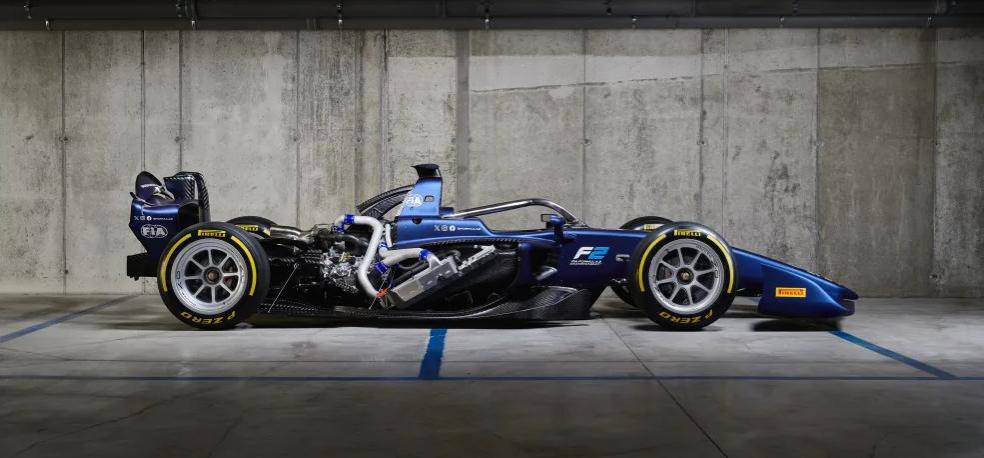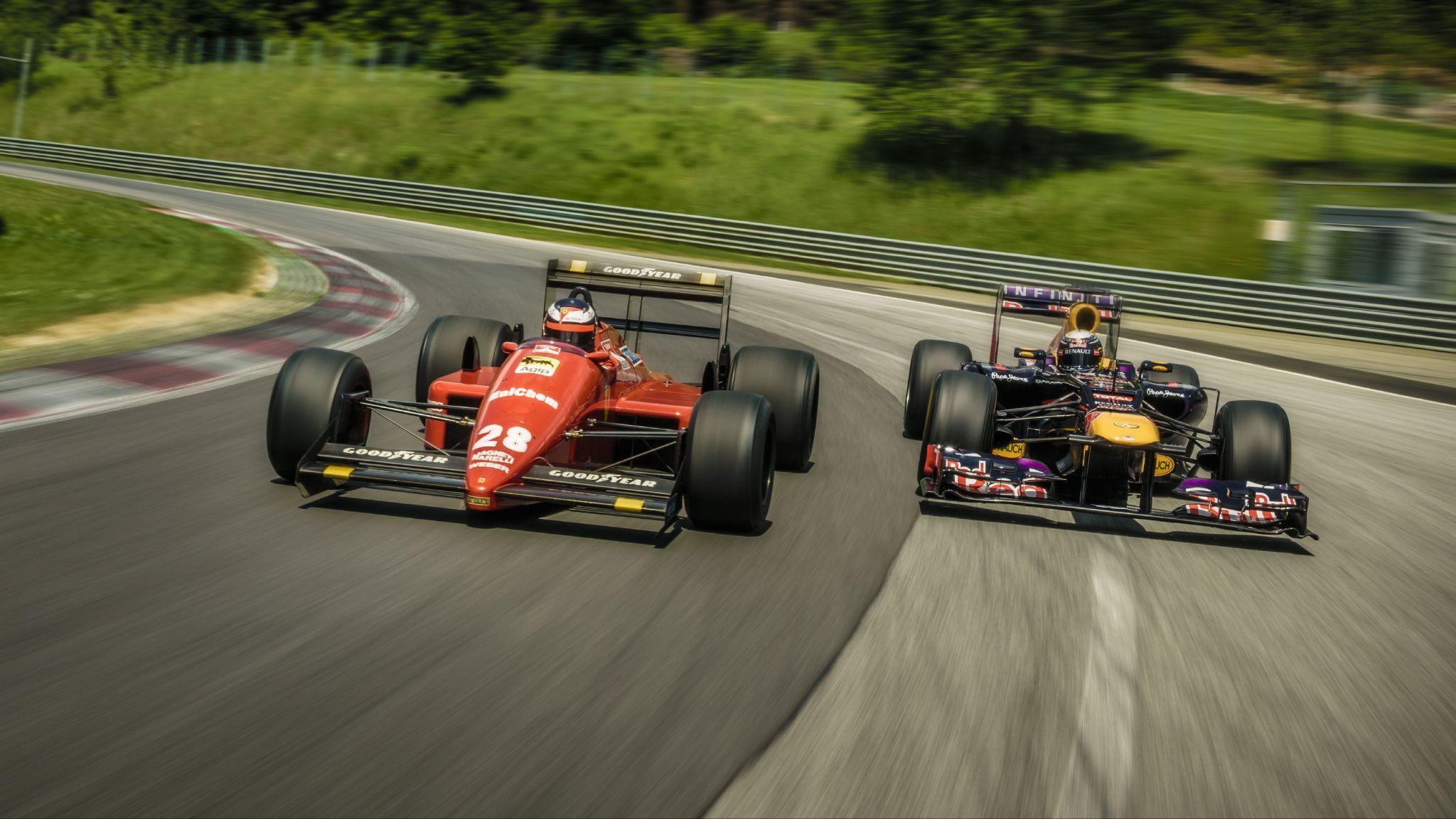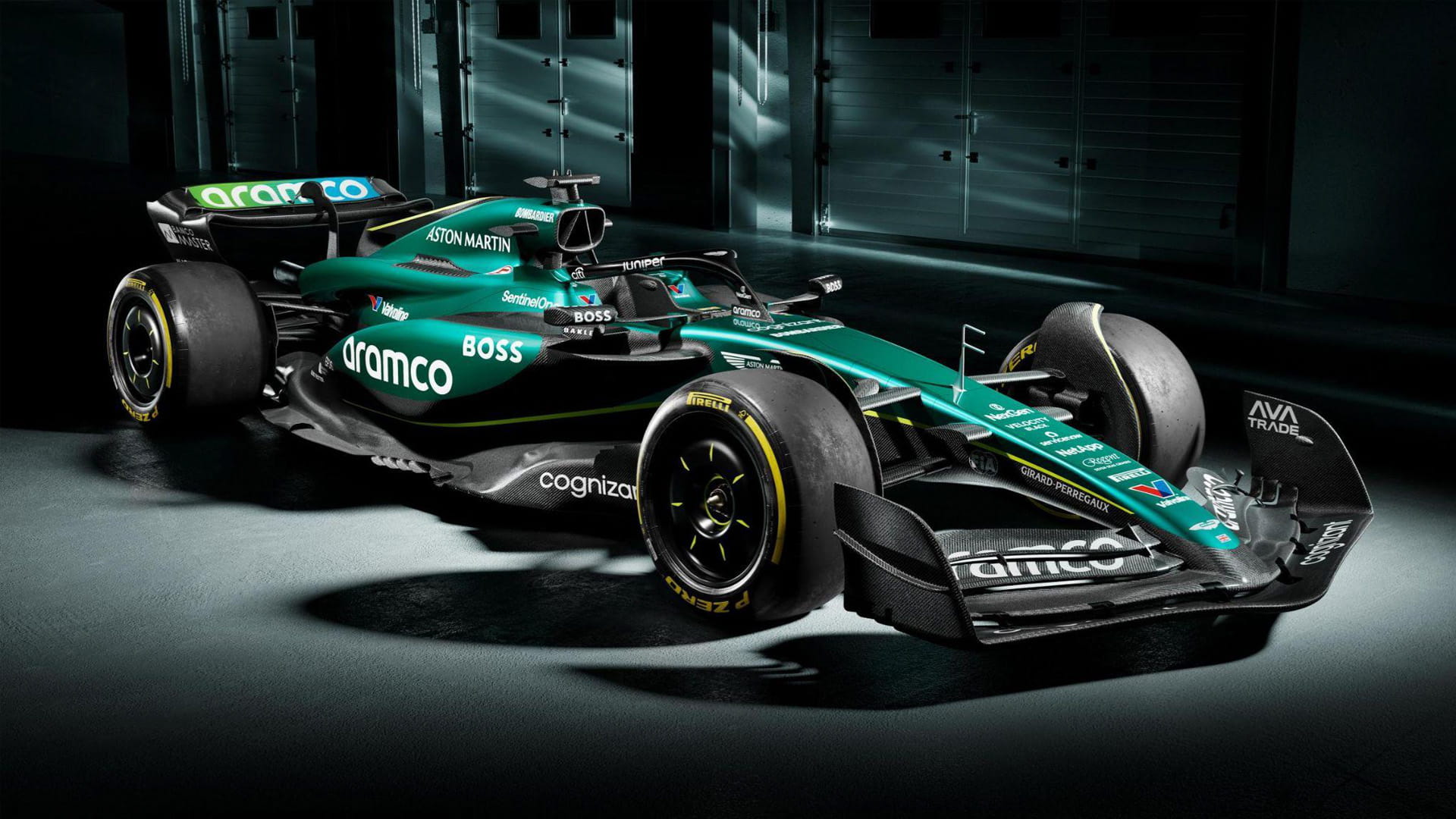Event
Formula 1 vs Formula 2 vs Formula 3 - how do the FIA single-seater championships compare?
by Phil Horton
10min read

Formula 1 cars are the fastest single-seater packages in motorsport, but how does F1 stack up to its junior disciplines in the FIA pyramid: Formula 2 and Formula 3?

Sign up for a newsletter and we'll make sure you're fully up-to-date in the world of race technology
Aspiring F1 drivers will generally race using F4 machinery - in various series around the globe - as they make their step from karts to single-seater cars at the age of 15 or older. Drivers might then move to ‘Formula Regional’ machinery, which are slightly more powerful single-seater cars than F4 cars.
Of the full-time rookies in the 2025 F1 grid, Jack Doohan (Alpine), Ollie Bearman (Haas), Gabriel Bortoleto (Sauber) and Liam Lawson (RB) will have raced in F3 and F2 before reaching F1.
So how do the three major FIA single-seater cars differ? We delve into their specifications and compare the three junior championships.

Formula Regional is usually the first step from karting for drivers aspiring to make it to F1
How are F1, F2 and F3 cars fuelled?
Fuel suppliers work closely with engine manufacturers to ensure there is a harmonious partnership, and they are also careful to ensure that the fuel quality does not degrade or become contaminated over time. Formula 1 cars can carry 110kg of fuel at the start of the race, and there is a fuel flow limit of 100kg/hr, and there are two fuel flow metres onboard each car.

Formula 3 cars at the start of a race in Spain, in 2024. Aramco supplies fuel to the FIA F2 and F3 championships
How do F1, F2 and F3 engines differ?
Since the start of the 2014 season, F1 cars have used 1.6-litre V6 turbo-hybrid power units in place of the previous era’s V8 engines.
From 2026 the core of the current V6 turbo hybrid power unit will remain the same but the Motor Generator Unit-Heat (MGU-H) will be removed and instead the Motor Generator Unit-Kinetic (MGU-K) will take on greater importance. A more powerful battery will produce three times the electrical power, while energy produced under braking is expected to double.

Valtteri Bottas reached 235mph at the wheel of his Williams during qualifying for the 2016 European Grand Prix in Azerbaijan
Each F1 team is supplied with engines from dedicated manufacturers.
F2 uses 3.4-litre six-cylinder turbocharged engines from a single supplier - Mecachrome. These engines do not have a hybrid component and are rated to 620hp. F2 cars can reach speeds of 209mph.
F3 also uses 3.4-litre six-cylinder engines supplied by Mecachrome, but without a turbocharger. F3 engines are rated to 380hp and the cars can reach speeds of around 186mph.
F2 and F3 engines are designed to last 14 rounds - or 28 races - over a calendar year. They are randomly distributed to each team and driver from the Mecachrome factory in France and serviced after 8,000km of usage.

A cutaway showing the engine inside the current generation of Formula 2 car
What are the differences between F1, F2 and F3 gearboxes?
That means F1 customer teams such as Aston Martin, Haas and RB will purchase gearboxes instead of designing them in-house.
Teams are allocated eight gearboxes per season - four per driver - before they incur penalties.

The next-generation Formula 3 car will make its debut in 2025, with a new gearbox and extensive safety features - plus 16-inch Pirelli wheels
Comparing F1, F2 and F3 tyres

Pirelli Formula 1 tyre specification is denoted by the colour on the sidewall. Red denotes the soft tyre, yellow denotes the medium tyre, and white denotes the hard tyre
F2 has four dry-weather tyre compounds and two are brought to every event, dubbed the Prime and the Option, and both compounds must be run in the feature race. Unlike F1, tyre blankets are not used to preheat tyres in F2 and there is only one wet tyre compound.
F3 has smaller 13-inch wheels but, from 2025, the size will increase to 16 inches.
F3 races are shorter than its counterparts’, only one type of compound is used in race trim.

Neither Formula 2 nor Formula 3 have intermediate tyres; they both use blue-banded Pirelli wet tyres in case of rain
F1, F2 and F3 aerodynamics and laptimes

The latest generation of Formula 2 car was introduced in 2024
F2 and F3 also use DRS in the same vein as F1, though F1 is set to scrap DRS from 2026 when moveable aero is introduced as part of the new regulations.
Lando Norris’s McLaren MCL38 set the fastest F1 qualifying lap of 1m11.383s at the Spanish Grand Prix venue in 2024. In F2 the fastest qualifying lap was 1m24.766s, while in Formula 3 the best time was 1m28.463s.

Formula 3, Formula 2, and Formula 1 cars share the same venue 10 times per year
How heavy are F1, F2 and F3 cars?
Increased car weight has been a discussion point in single-seater categories for several years, owing to the mass associated with hybrid systems and their technology, as well as the increased weight from enhanced safety structures.

Formula 1 cars are more than 200 millimetres longer than Formula 2 cars and more than 500 millimetres longer than Formula 3 cars
At the pinnacle is F1, with advanced hybrid engines, complex and constantly evolving aerodynamics, and high speeds - with laptimes far faster than those in F2 or F3.
Meanwhile F2 and F3 are single-spec series focused on driver skill in a more technologically controlled environment to ensure younger drivers can learn their craft on the way to F1.
The FIA’s structured pathway ensures that drivers can progress through the ranks with increasingly challenging machinery and longer races while the FIA continues to evolve and tweak each series to ensure parity and safety.

.jpg?cx=0.5&cy=0.5)




.jpg?cx=0.62&cy=0.39)


.jpg?cx=0.5&cy=0.5)
